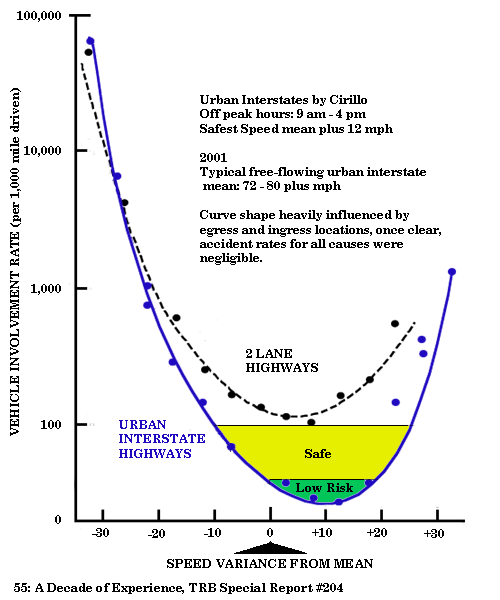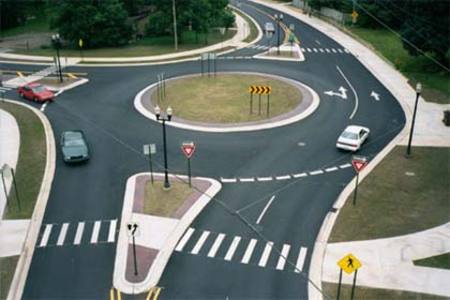ITE Speed Limits and the Law - powerpoint

Speed Limits: Why the 85th Percentile, and how it relates to safety, enforcement and our laws. Paper No: 134 - powerpoint pdf
Institute of Transportation Engineers
2009 District 6 Annual Meeting
July 12 –15, 2009, Denver, CO
Chad Dornsife, Executive Director
Best Highway Safety Practices Institute
Executive Summary
Introduction
Setting speed limits is one of those hot button issues where the science and our practices couldn't be more at odds. Regardless of widely held myths that permeate this issue, the job of an engineer is to make our road safer applying their profession’s empirical body of knowledge. Safety and due process of law can only be achieved when our practices are fact based and uniformly applied with the same expectations regardless of state lines or jurisdiction classification. The “Why the 85th Percentile, and how it relates to safety, enforcement and our laws,” here will be an enlightening tool for the practitioner that will make us all safer.
Safe speeds: We cover everything from the Montana Paradox when speed limits were removed altogether, how they are to be determined, the MUTCD, and what speed limits can and cannot do.
Our law: The genius of our “We the People” Constitution, our founding fathers not only understood the nature of power; they constrained it with checks and balances. In Article 1 et al of the US Constitution assigns the domain of roadway regulation to Congress, it also assures equal protection and due process for each citizen. The Constitution’s supremacy encompasses the entire field of traffic control and the exercise of police powers and regulation thereof.
In regard to traffic control devices and speed limits, federal supremacy and our Constitutional rights IS NOT determined by the opinion of one or a few individuals or one of the 80,000 political jurisdictions within the US and it territories. To conform, each speed limit must be fact based; determined by the licensed engineering practitioner responsibly for the safety of that roadway segment; applying nationally recognized vetted practices and standards; after an engineering study, that shall be documented and periodically reviewed for efficacy.
It’s the job of the engineer to conduct periodic safety audits (engineering studies) on each roadway in their jurisdiction, including quantifying the public’s consensus as to what speeds, the motorists have found to be safe. Then the engineer, applying his professional’s body of knowledge, is charged with making sure that the traffic control and roadway design meets that safety need. It’s the job of the Legislative body to give it the force of law.
The challenge is articulated here in a NCHRP discussion of design, operating and posted limits.
2003 NCHRP Report 504 reports a new factor.
"To an open-ended question," respondent engineers placed "politics" way above the engineering factors as the number one reason for "deviation" from the 85 percentile operating speed.
With this political reality of "politics" controlling sound engineering traffic engineering studies, compliance with the MUTCD becomes impossible.”
Since 1992, engineering studies and the 85th percentile speed as the primary criteria for traffic control and setting speed limits has been under direct attack within the USDOT, with a concerted effort to dilute or displace these engineering tenets. Incredibly, in 2003, the USDOT made this NCHRP 504 statement a per se fait accompli when they codified proscribed non conforming local political whim as superior to Congress’ uniform national traffic control standard mandate!
What didn’t change is the reasoned ethos of professional engineer practitioners, their institutions, applied empirical knowledge, uniformity of application and expectation is the only path that can make us safer and assure fair laws, too.
